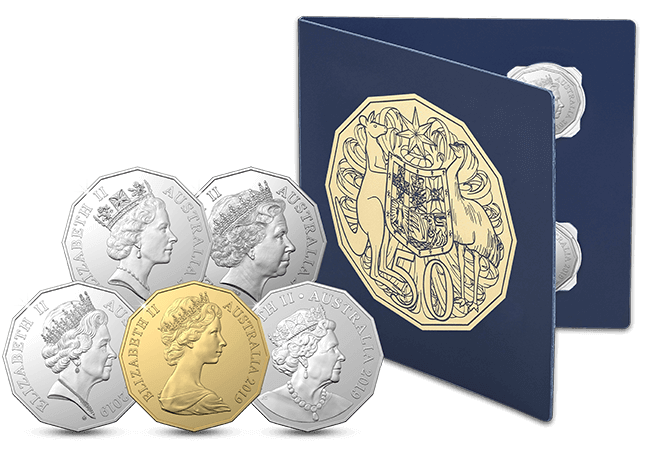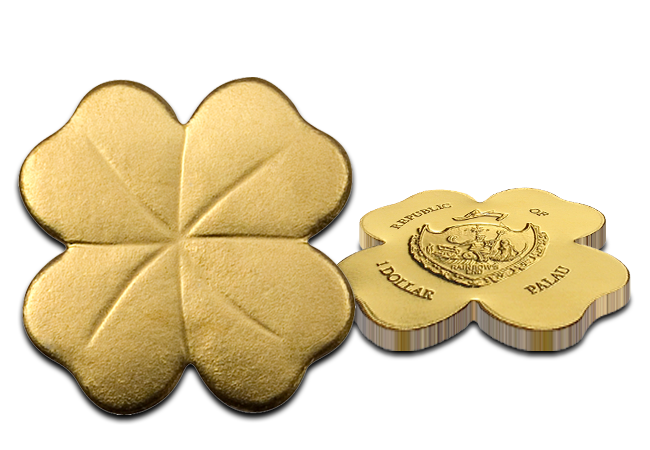Posts Tagged ‘Coins’
Australia’s most distinctive decimal coin turns 50!
Whilst we’re busy celebrating the 50th anniversary of the 50p coin here in the UK, celebrations are also taking place half a world away as Australia marks 50 years since the introduction of the 12-sided 50 cent coin this year.
First issued in 1969 as a replacement for the round 50 cent, the new 12-sided design has since become Australia’s most distinctive decimal coin.
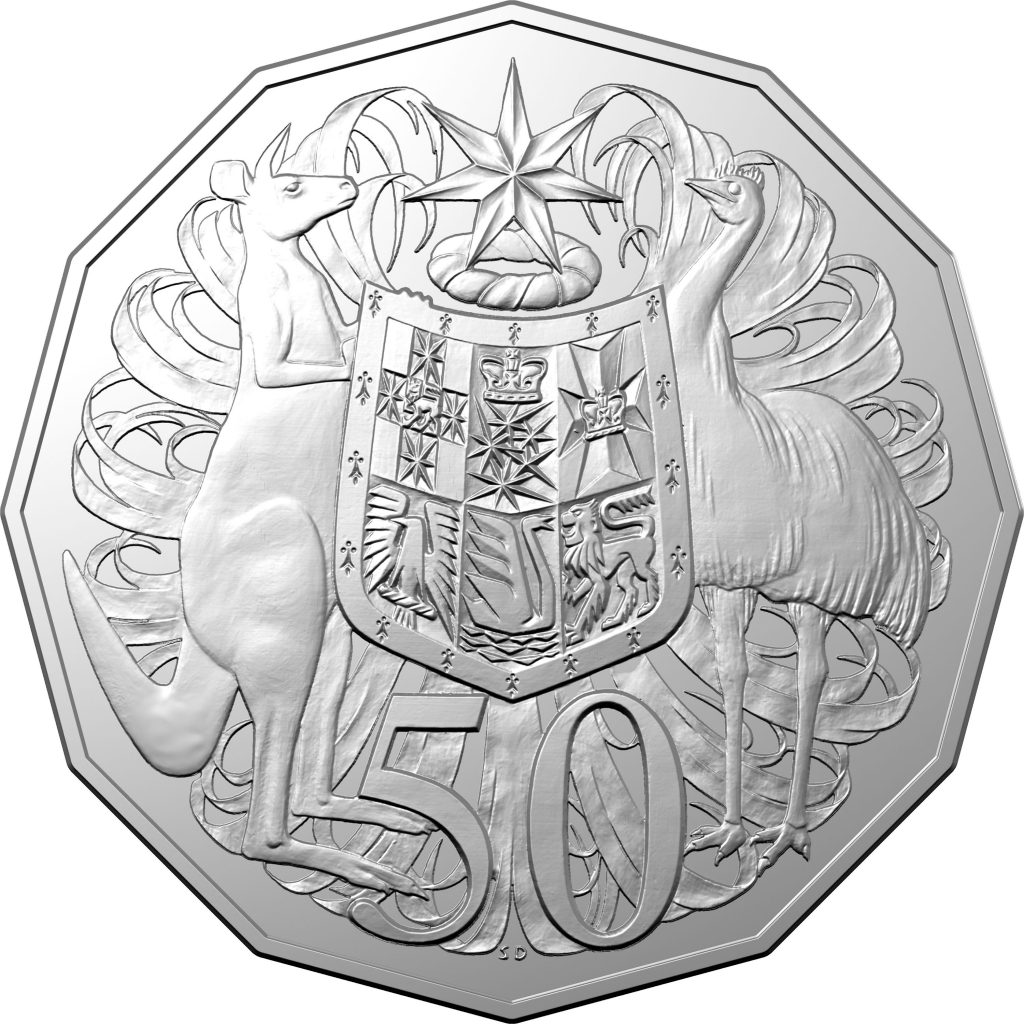
Australia’s first 50 cent
In 1966, as part of the changeover to decimal currency, Australia introduced the round 50 cent, which was made up of 80% silver and 20% copper. This high silver content soon meant that the coin was actually worth more than its face value and so was withdrawn from circulation and replaced with the new 12-sided cupro-nickel design in 1969.
Although the coin was withdrawn from circulation, many millions are thought to have been hoarded by the Australian public and can now be seen listed on eBay for upwards of 10 times the original face value.

Celebrating 50 years since the 12 sided 50 cent
To celebrate the significant anniversary of the introduction of the 12-sided 50 cent, The Royal Australian Mint have released a special commemorative coin set, featuring a Gold-Plated 50 cent coin in celebration of the golden anniversary year.

But the special Gold-Plated coin within this set isn’t the only thing which makes it unique…
This set actually showcases the five effigies of Her Majesty the Queen that have featured on Australia’s 50 cent coins since 1969.
Arnold Machin
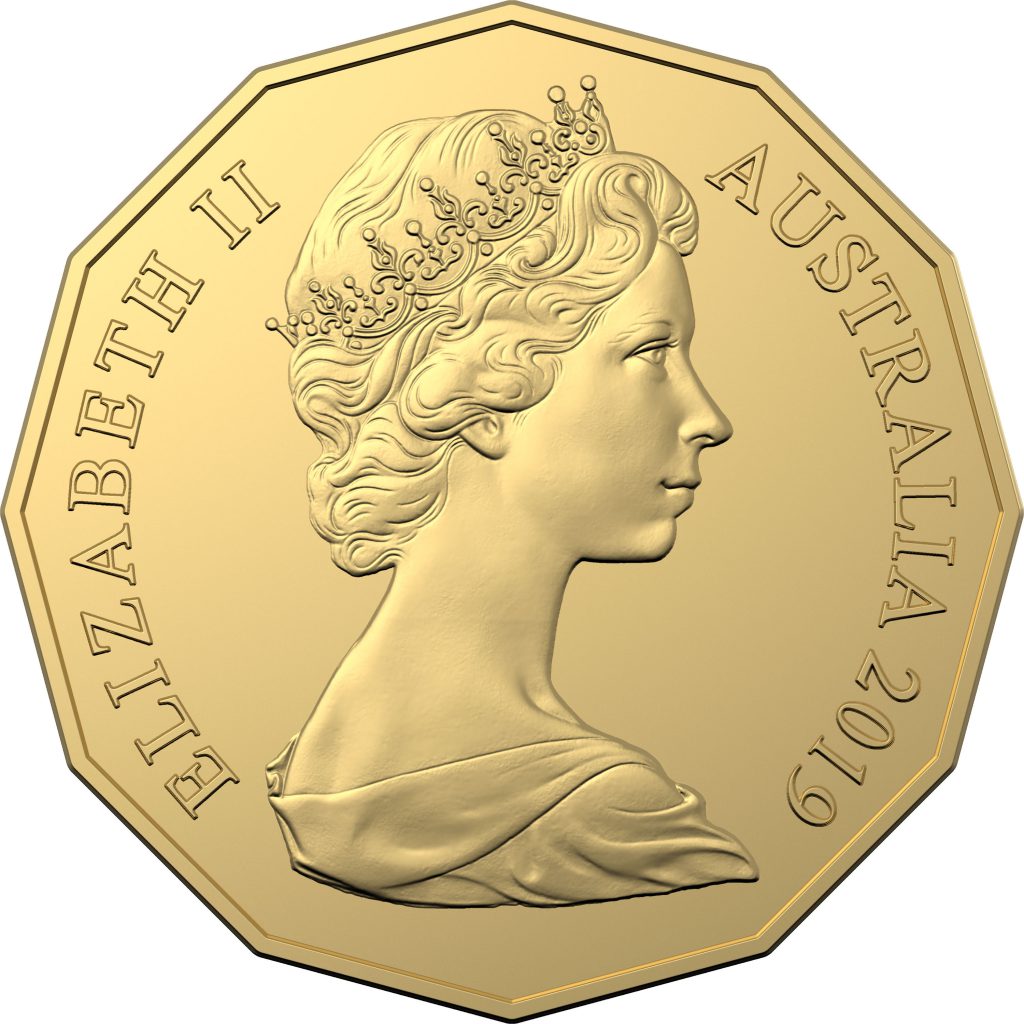
The Gold-Plated 50 cent coin features the very first effigy of Her Majesty the Queen to be used on a 50 cent coin.
Designed by British artist and sculptor Arnold Machin, and approved in 1964, this effigy was first used on the Australian round 1966 50 cent coin, meaning it preceded the first use of this portrait on UK coins in 1968.
This portrait featured on Australia’s coinage from 1966 to 1984.
Raphael Maklouf
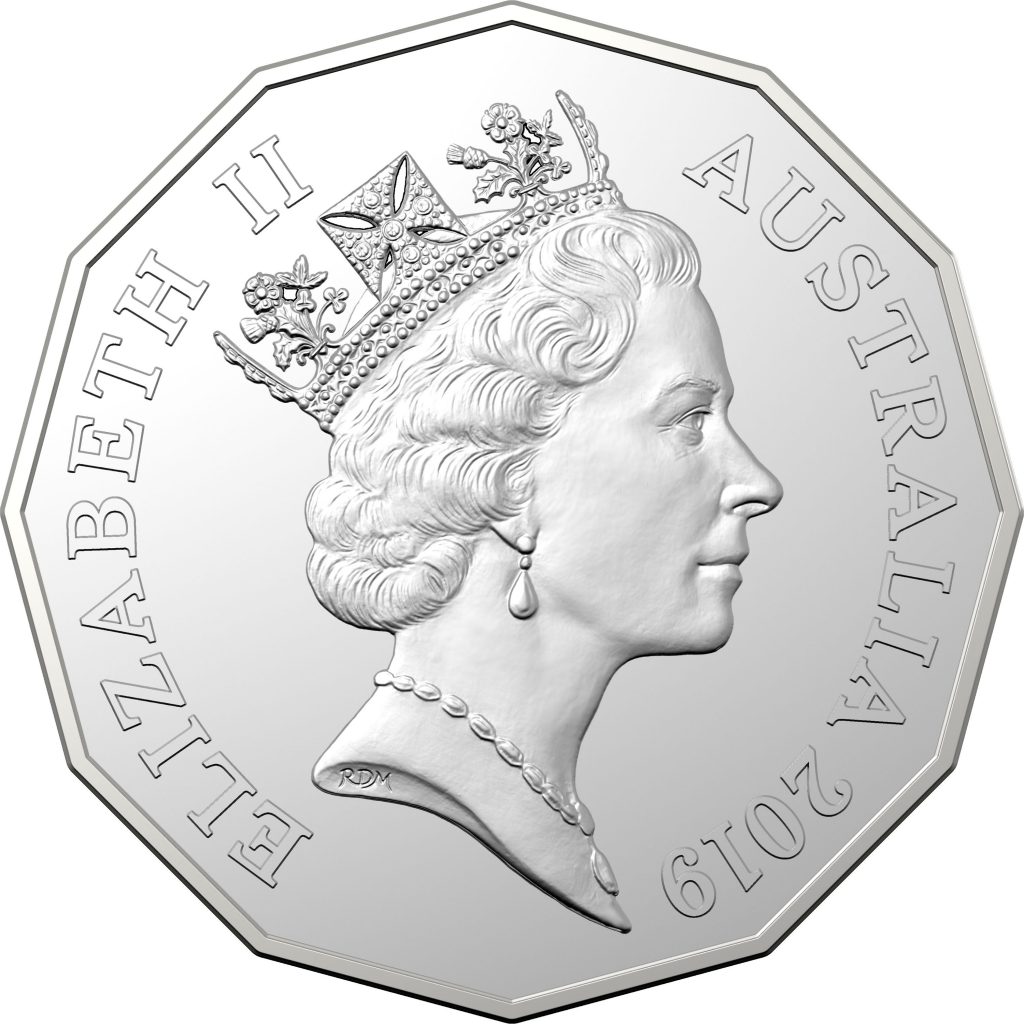
Raphael Maklouf’s portrait of Queen Elizabeth II was chosen from 17 artists invited by the British Royal Mint to replace Arnold Machin’s portrait.
Unlike the previous portraits of Her Majesty, Maklouf’s design featured the Queen wearing a necklace and earrings. The designer’s initials ‘RDM’ can be seen at the Queen’s neck.
This portrait featured on Australia’s coinage from 1985 to 1997.
Ian Rank-Broadley
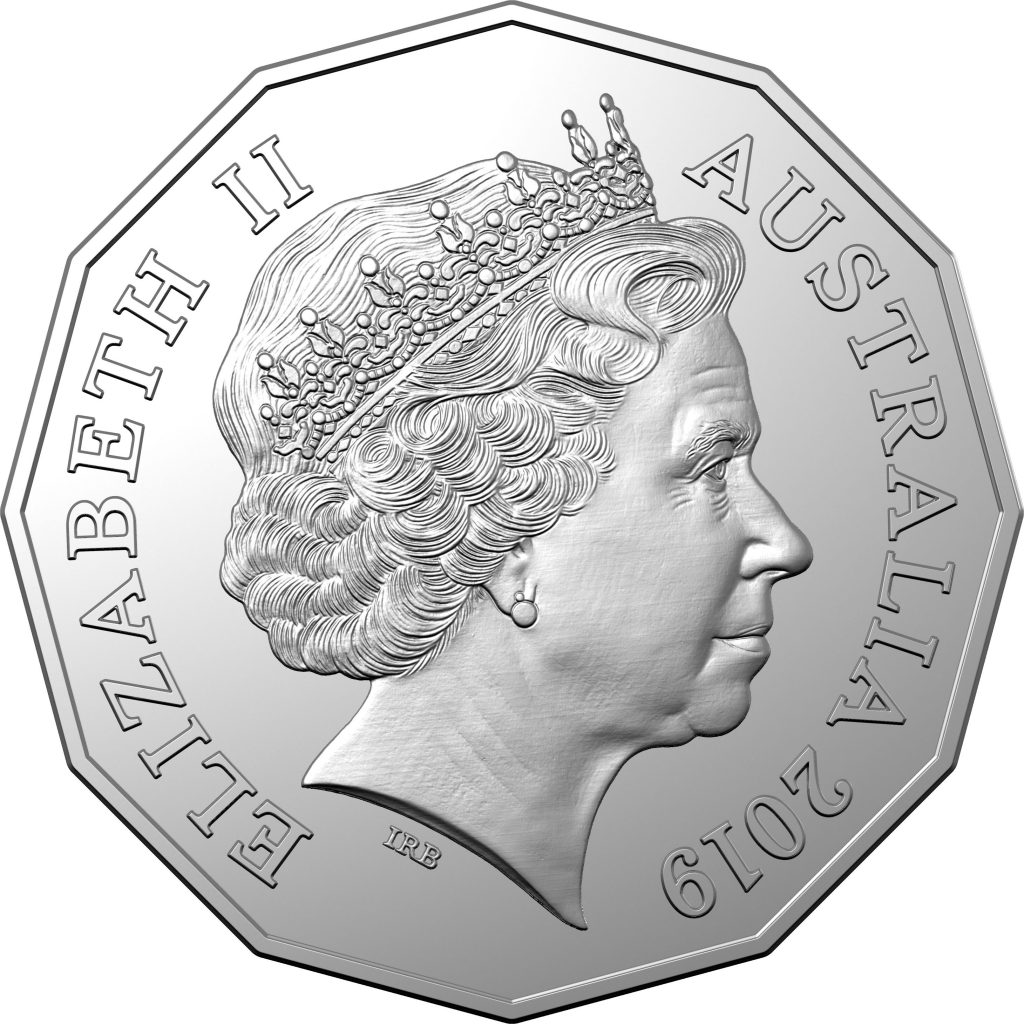
The next portrait of Queen Elizabeth was introduced following a competition to redesign the obverse of the UK’s 1997 Golden Wedding Crown. Ian Rank-Broadley’s submission was of such a high standard that it led to a redesign of the obverse for all UK circulation coins in 1998.
It was introduced on Australia’s coinage, including the 50 cent coin, the following year.
This portrait featured on Australia’s coinage from 1999 to 2018.
Vladimir Gottwald
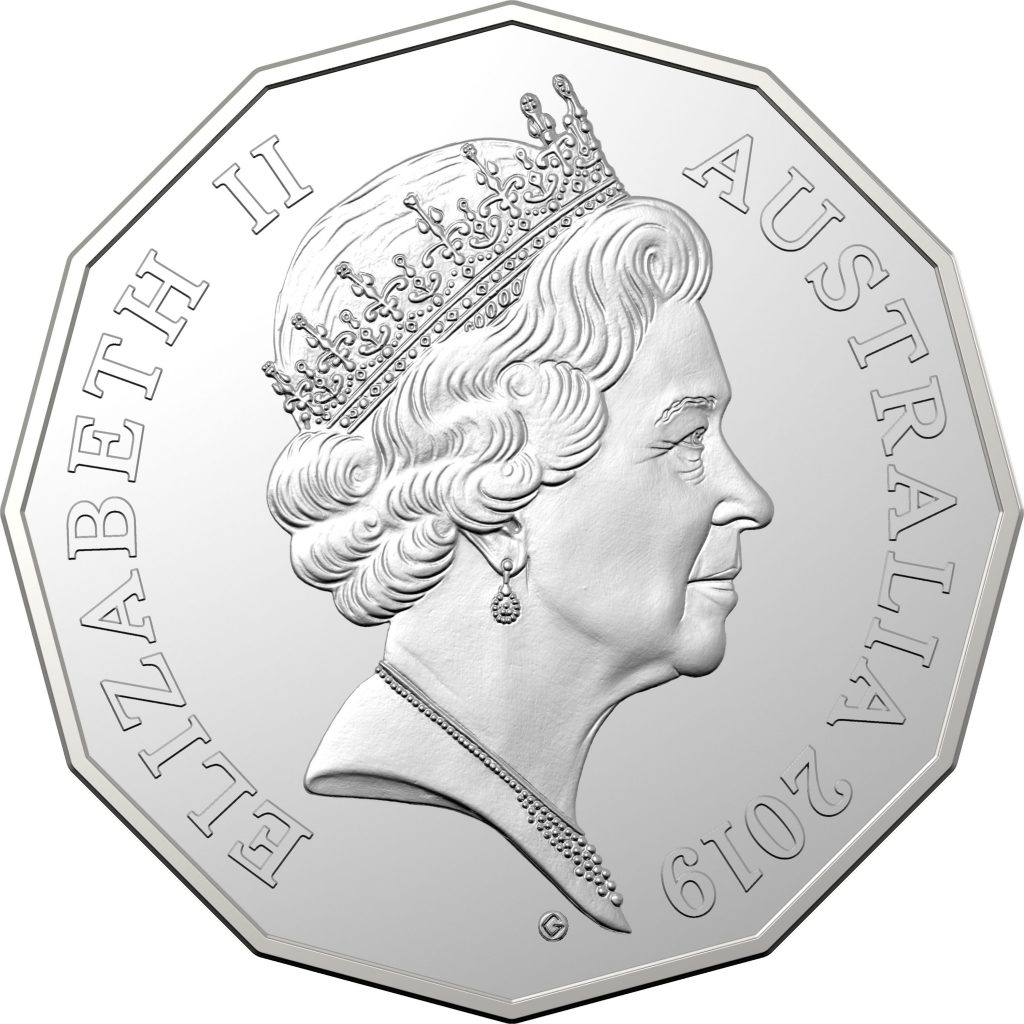
Amongst the designs submitted into the competition to redesign the obverse of the UK’s 1997 Golden Wedding Crown was Vladimir Gottwald’s portrait of the Queen.
Gottwald’s design was approved as a one-off use to commemorate the Royal visit in 2000, making him the first Australian designer to have his portrait on the obverse of an Australian coin since the 1910-1936 effigy of King George V.
This portrait featured on the Australian 50 cent for one year only in 2000.
Jody Clark
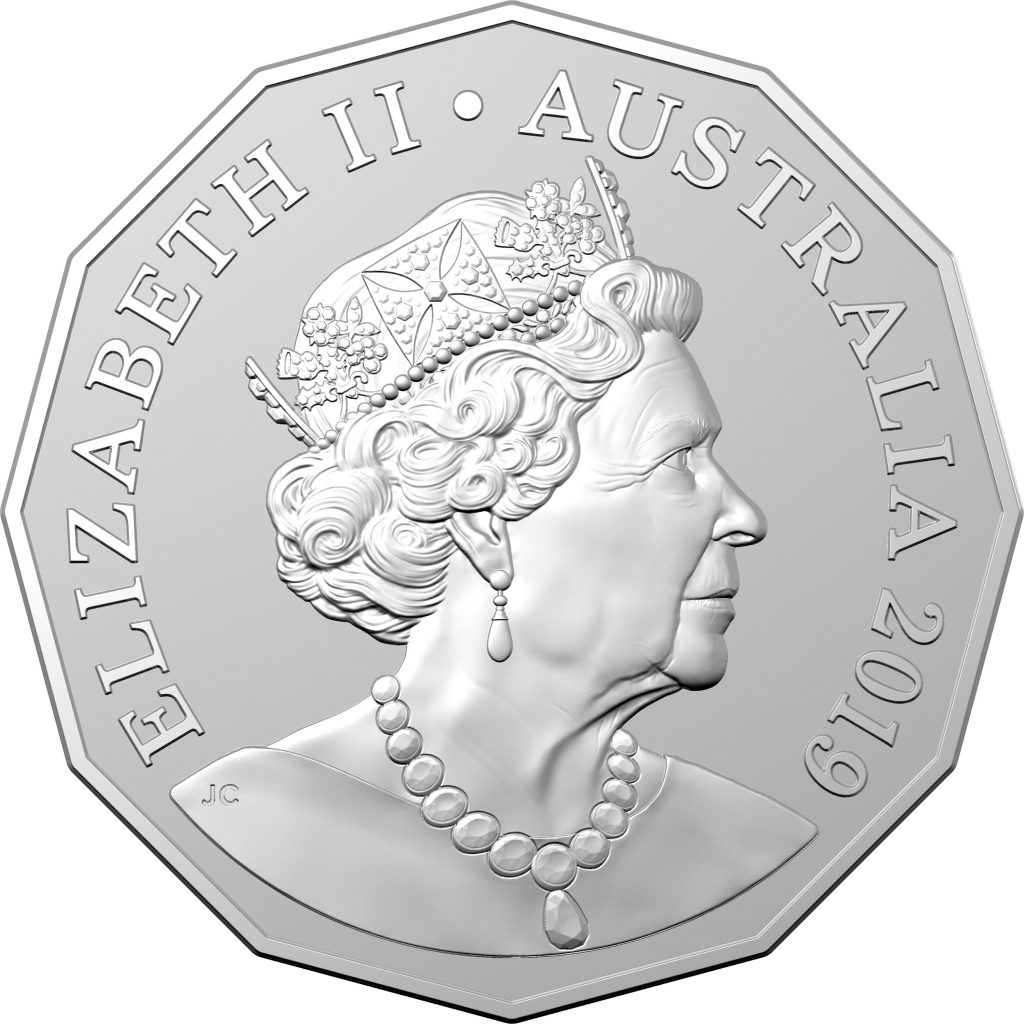
Jody Clark’s portrait of Her Majesty the Queen has featured on UK coins since 2015, but it wasn’t until 2018 that an adapted version of this coin was introduced on Australia’s coinage.
Unlike the UK version, this adaptation features Queen Elizabeth’s shoulders, as well as the Victorian coronation necklace.
You might recognise this most recent portrait from British Isles coinage, in particular the highly popular Isle of Man TT £2 coins.
Limited edition set
Just 20,000 of this prestigious set have been minted, making it significantly collectable and ideal for numismatists.
It’s truly fascinating to take a look at the different coinage from countries across the world and the milestone moments in their numismatic history.
I’m sure you’ll agree that this set is a fantastic way for Australia to celebrate this significant anniversary.
Own the LIMITED EDITION Gold Plated 50 cent
You can now secure these coins within a bespoke presentation pack, perfect to display and protect these unique coins, which are sure to be snapped up by collectors.
11 of the world’s most oddly shaped coins…
One of the most fascinating things about coin collecting is of course the design on the coin – but what about the shape of the coin itself? As minting technology continues to advance, coins are being struck in all kinds of exciting and innovative shapes.
So I’ve put together selection of 11 unusually shaped collectable coins from around the world…
1. The WWI Brodie Helmet coin …
To commemorate the Armistice Centenary, The Royal Canadian Mint issued a remarkable new coin to honour each and every fallen soldier.
Struck in the shape of a WWI Brodie Helmet, it is more deeply curved surface than any other concave or convex-shaped coin I’ve seen before. The design is so unique in fact, that the Mint have kept the minting technique a closely guarded secret.
2. The FIRST rugby coin of its kind…

To mark the Rugby World Cup in 2015, France issued the first ever coin shaped like a rugby ball.
The concave coins proved to be extremely popular with collectors worldwide, with many keen to add a coin with such a unique pedigree to their collections.
3. A coin shaped like a country…

The Perth Mint regularly issue map-shaped coins, taking advantage of their country’s unique and recognisable outline.
This series makes use of purpose-built tooling and die design to give the coin its distinctive shape.
The first coin in the series featured the Kookaburra and was issued in 2012. Since then there have been a variety of different animals to feature on the coin, with the most recent being the Dingo.
4. The ‘Imperial Egg’…
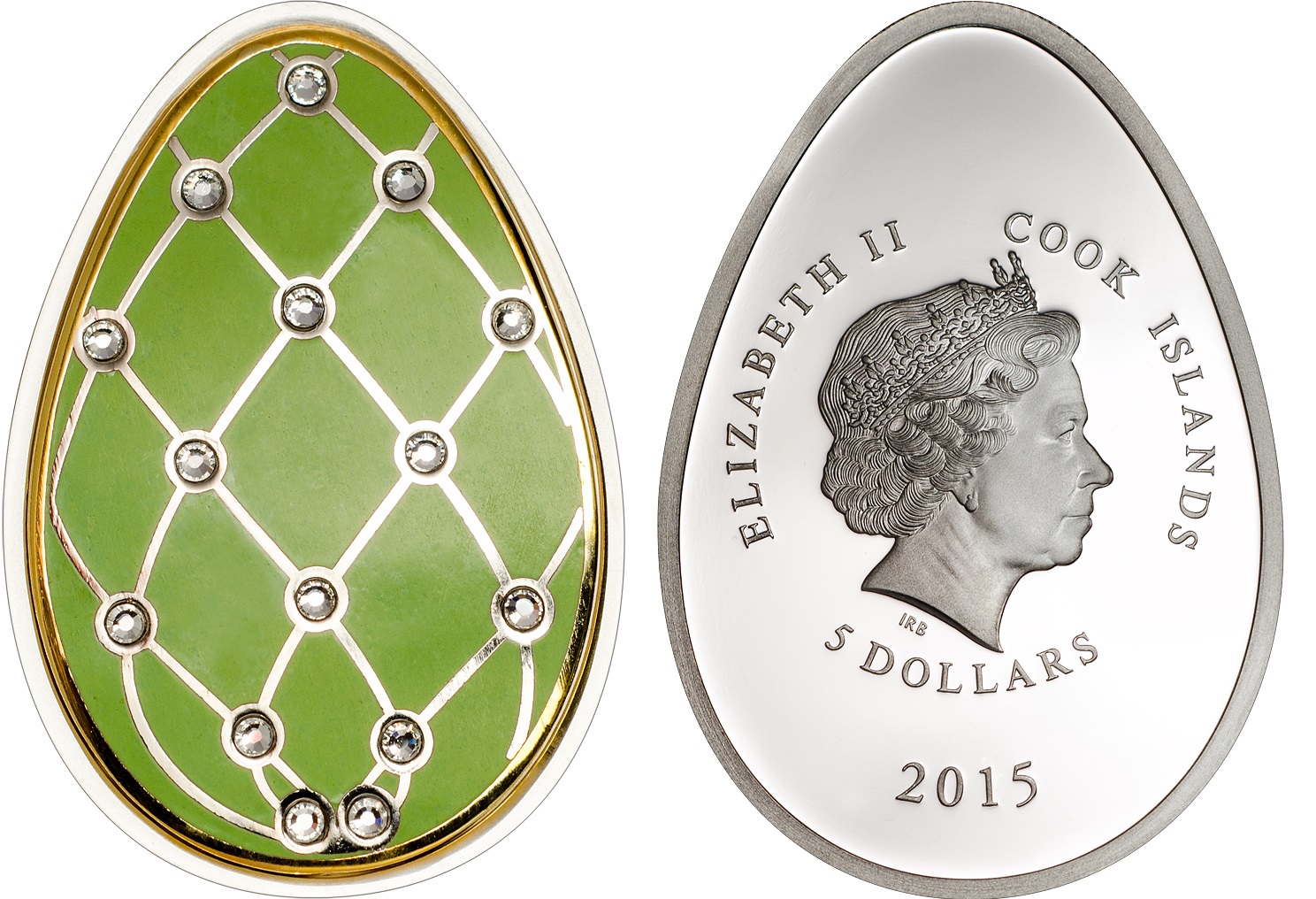
This impressive looking coin boasts beautiful enamelled colour and a shimmering gemstone inlay.
The ‘Imperial Egg’ Coin is based on the work of Fabergé and proved to be very popular with collectors, especially during the Easter period.
5. You’ll be lucky to find one of these…
You certainly won’t find this Four-Leaf Clover Coin in a field, no matter how hard you look! Legend has it that Eve took a four-leaf-clover from paradise as a memento for the wonderful time she had spent there – they’ve been considered lucky ever since.
Struck in gold to a proof finish, this cleverly produced coin could certainly be regarded as lucky by collectors who have one in their collection – as it is now highly sought-after.
6. The Earth-shattering coin…

The extra-terrestrial chondrite that has been set into the centre of this coin was sourced from a meteorite that crash-landed in Morocco in 2005. The space rock shattered into several pieces when it entered the Earth’s atmosphere.
The coin itself has been struck in a concave shape to represent the crater in which the piece of meteorite landed.
7. Is it a coin or is it a bar? It’s both…
This rectangular silver coin-bar features one of the world’s most iconic landmarks – London’s Tower Bridge.
It’s not often that you see coins minted in this shape as the ‘bar’ format is usually reserved for bullion.
This stunning coin boasts an intricately detailed engraving and tiny details can be seen on the Tower Bridge to create windows, clock and brickwork.
8. The poppy-shaped remembrance coin…

This coin’s unique shape and rich red printing on the reverse takes inspiration from the poppy, which has become synonymous throughout the world as a symbol of remembrance and the charitable work of The Royal British Legion.
Issued to commemorate the end of the First World War and to Remember the Fallen, the Poppy Coin is a significant issue that is poignant to many.
9. The coin that sold out in two days…
This remarkable coin is shaped like the iconic Canadian maple leaf, and proved so popular that it sold out at the Royal Canadian Mint in just 2 days.
Canadian Maple Leaf coins are some of the world’s most recognised Silver coins. This issue takes the design to a whole new level and comes complete with a special wooden display case.
10. The coin that combines heaven and earth…
Issued in China since 221 BCE, the Chinese Lucky Cash Coin features a square hole at its centre to represent Earth, while the circle symbolises heaven. This combination of heaven and earth make the coin a symbol of harmony and prosperity.
Chinese fortune-tellers would use cash coins, a tortoise shell, and their skill at numerology to tell the future. Because of their association with mystical prediction, these coins from China are thought to bring good luck.
11. And last but not least…

The playful Russian ‘Matryoshka Dolls’ first appeared in the late 19th century, now they’ve been immortalised on a silver coin.
This oval issue is displayed within special bespoke packagingwhich consists of two traditional wooden nesting dolls placed one inside the other – the coin and packaging are both something that I’ve never come across before!
Are you lucky enough to have any of these coins in your collection, or perhaps you’ve seen another coin that you think should be on the list? Let me know in the comments below
If you’re interested in coin collecting, our Change Checker web app is completely free to use and allows users to:
– Find and identify the coins in their pocket
– Collect and track the coins they have
– Swap their spare coins with other Change Checkers

Sign up today at: www.changechecker.org/app
The story of the 1885 Trade Dollar worth millions!
A few years ago, we were asked to identify an unusual coin, which on first glance appeared to be a US Trade Dollar from 1885. However, once we started researching this coin, it became obvious that it must have been a fake.
Here’s why a genuine 1885 Trade Dollar would be impossible to find…
One of the rarest coins on the planet
In 2019, the finest known 1885 Trade Dollar was sold for an eye watering $3.9 million at Heritage Auctions! Whilst this US coin may not be familiar to UK Change Checkers, it is incredibly rare – perhaps one of the rarest coins on the planet.
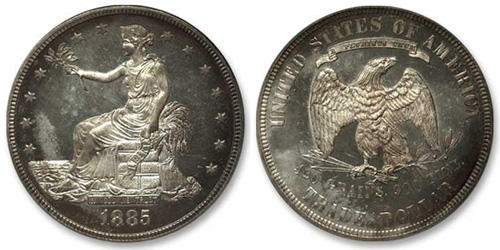
The US Trade Dollar was designed by William Barber and features Lady Liberty seated on a pedestal of merchandise, facing across the sea and holding an olive branch. On the reverse, an eagle holds branches laden with berries within its talons – an iconic American image. This design remained unchanged besides minor modifications up until the last coin of the series was struck.
Creation of the Trade Dollar
Made from .900 Silver, these coins were struck primarily for trade with Asia and were competing against the other large silver trade coins which had already become popular in the East.

The 1873 Coinage Act made these coins legal tender for payments up to five dollars and many made their way into American commercial channels, despite the majority being sent to Asia.
As their distribution across America became more widespread and the price of silver fell, the coins were demonetised, although many 1873 – 1883 Trade Dollars can still be found on the secondary market today and are often sought-after by US collectors.
The greatest numismatic mystery…
In 1878, production of circulation strikes officially stopped. The Philadelphia Mint continued to strike Trade Dollars after this, however the coins were only issued in proof quality for numismatic purposes.
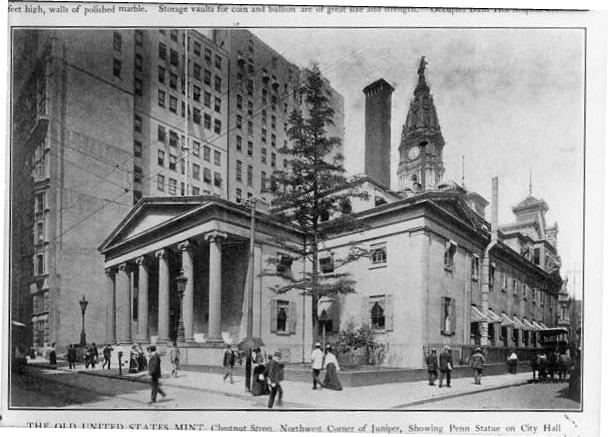
Credit: Moses King, Public domain, via Wikimedia Commons
It was initially believed that the final year of production was 1883, however over two decades later, 1884 and 1885 dated Trade Dollars created a sensation when they appeared on the secondary market.
Incredibly, just 10 1884 proof quality Trade Dollars were struck and more astonishing still is that only 5 of these coins were struck in 1885!
Imagine how exciting it would have been to first find out about these secret coins, and how desperate American collectors must have been to get their hands on one!
Lack of documentation means the origins behind their creation still remains one of the greatest numismatic mysteries… It’s actually thought that employees from the Philadelphia Mint secretively struck the coins after production was halted.
Sold for $3.9 million!
All 5 coins from 1885 are now accounted for and are owned in private collections, meaning the public rarely get the chance to see these coins exhibited.
A few of the 1885 Trade Dollars have sold at private auction, reaching phenomenal prices. One of the finest specimens from the Eliasberg Collection appeared at Heritage Auctions in 2019 and sold for $3.9 million!
President of Heritage Auctions, Greg Rohan said, “Owning the finest-known [1885 Trade Dollar] specimen is to own an enduring symbol of numismatic and American history.”

So, whilst the 1885 Trade Dollar would be an exceptional coin for any collector to come across, as all 5 1885 Trade Dollars are accounted for, the only explanation for the coin we were asked to look at is that unfortunately it must have been a fake.
It really would be amazing to be able to own a coin as rare as this though! What would you do if you came across such a unique coin in your change?
There are so many fascinating stories about different coins from all around the world and if you have a story about a rare or unusual coin, we’d love to hear it!
If you’re interested in coin collecting, our Change Checker web app is completely free to use!



